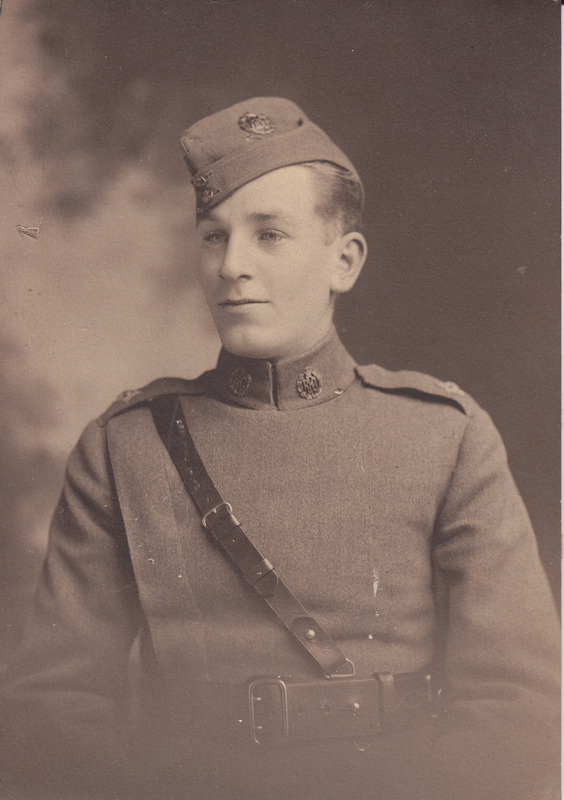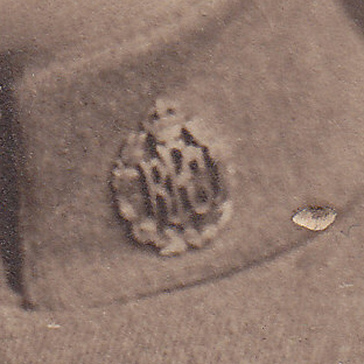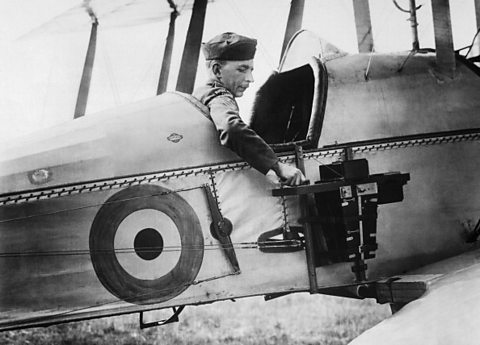Earlier this week I stumbled across this old photograph amidst a damp-stained and dirty heap of junk at the back of a shop. Somewhat scuffed, with traces of glue on the back where it had been pasted into an album or scrapbook, it had no other identifying marks or dates. At first glance I thought the uniform looked vaguely Russian, but upon peering closer I was able to make out the letters RFC on the collar badge: Royal Flying Corps.
The RFC was the forerunner of the Royal Air Force, which dates this photograph to the period between April 1912 – when the RFC was founded – and April 1918 – when it was amalgamated with the Royal Naval Air Service to form the RAF. The absence of any ‘wings’ badge on the tunic suggests that the serviceman was not (yet) a pilot. I think the single pip on his epaulette must indicate the rank of second lieutenant, or equivalent. Perhaps the photograph was taken near the beginning of the war, as he was starting his training?
At the start of World War One the RFC’s role was chiefly that of observation and reconnaissance, including aerial photography (above), involving hot air balloons as well as aircraft. This soon extended to include dropping hand-grenades and petrol bombs on the enemy, defending British airspace against Zeppelin attacks, and aerial combat with German airplanes. The latter were far superior in technical terms, and the RFC sustained heavy losses – most notably in ‘Bloody April’ 1917 when 245 aircraft were shot down, leaving over 200 aircrew dead and over 100 prisoners-of-war. Over 9000 aircrew were killed in total during the 1914-18 conflict. As Roland Barthes wrote, ‘The Photograph does not necessarily say what is no longer, but only and for certain what has been.’ [Camera Lucida 36]. This picture tells us nothing about the fate of this young man, and whether we are seeing him at the beginning or the end of his life.


